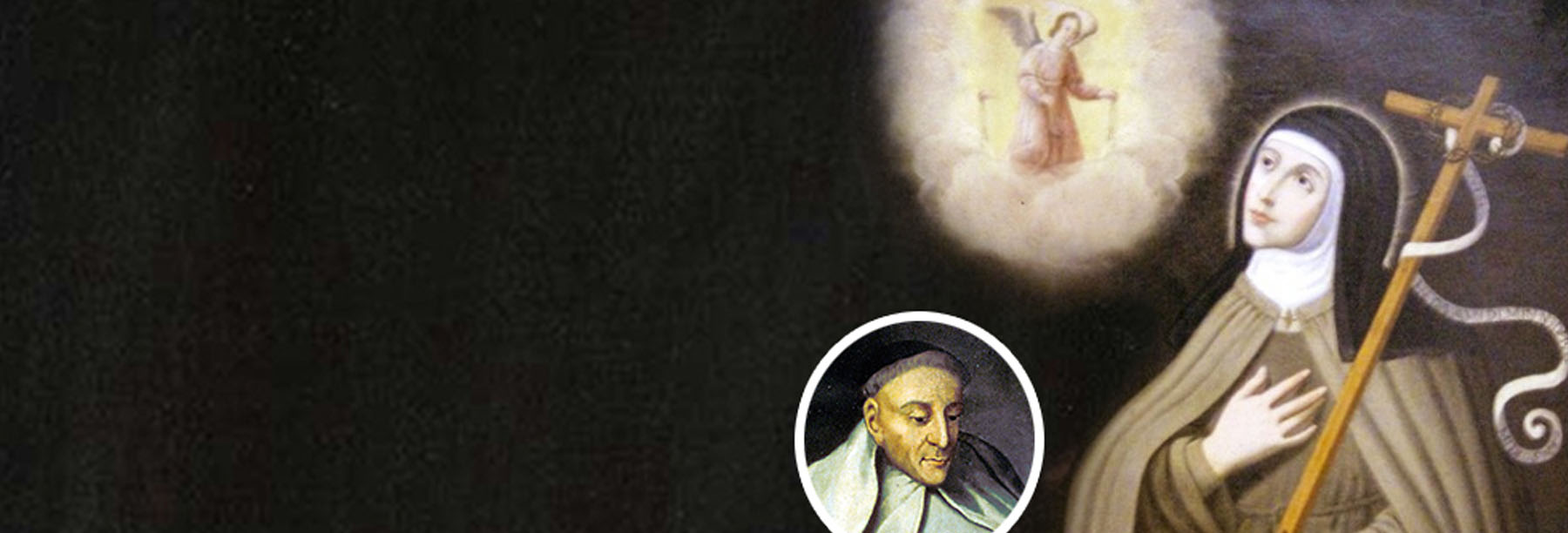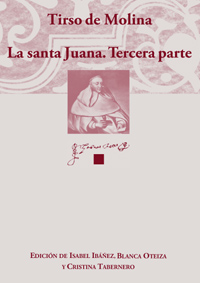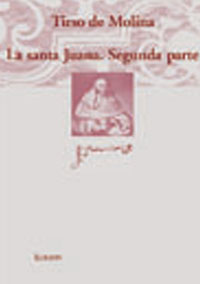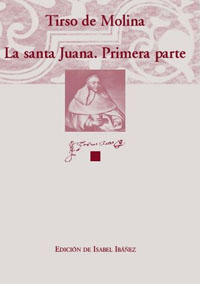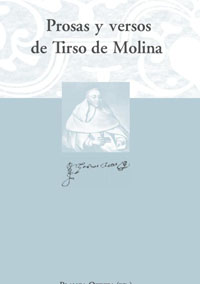Critical edition of the complete theatre of Tirso de Molina
The general goal of project in its various phases (references BFF 2002-01305, HUM2006-04363/FILO and FFI2010-18619) has been the production of critical editions of Tirso de Molina's theatre, in order to purify his texts of vices, deturpations and errors that were beyond the playwright's control. final It is a question of reconstructing and recovering his theatre, to offer it with the due guarantees to the academic community, to theatre professionals, students and those interested in general. But these texts also carry many cultural references (jokes, allusions, enigmas...) that need to be explained in order to be useful today. Hence the need for these critical texts to be accompanied by the appropriate annotation. Thus, in order to access, understand and disseminate this theatre with guarantees, the editorial task must be undertaken from the text and its interpretation, from the interaction of ecdotics and hermeneutics.
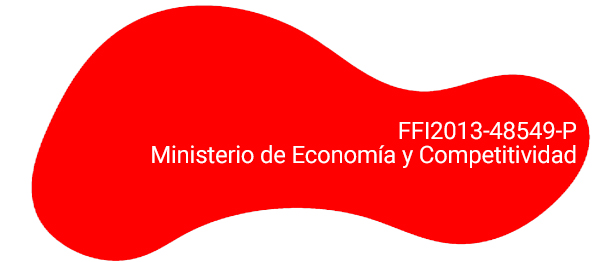 Consequently, the goal specific to this project in its fourth phase is to continue to expand this dramatic corpus by Tyrsus, for which we propose the critical and annotated edition of the trilogy of La santa Juana, comedies that are preserved in three manuscripts, two of them autographs.
Consequently, the goal specific to this project in its fourth phase is to continue to expand this dramatic corpus by Tyrsus, for which we propose the critical and annotated edition of the trilogy of La santa Juana, comedies that are preserved in three manuscripts, two of them autographs.
The results are the critical edition of the trilogy and its subsequent publication, following the same process as in the previous projects mentioned, in which the editions of 22 comedies were produced, of which the following titles have already been published: La Peña de Francia, El mayor desengaño, Quien no cae no se levanta, El vergonzoso en palacio, and El árbol del mejor fruto.
The trilogy of La santa Juana lacked a joint critical and annotated edition of its three comedies, following the editorial criteria set by modern textual criticism, i.e. modernization versus "old spelling". This edition is all the more necessary if we take into account that the comedies are preserved in three manuscripts, two of them autographs, which happen to be the only ones preserved in Tirso's theater, because although we have important manuscripts of many of his comedies, generally performance copies (El vergonzoso en palacio, La Peña de Francia, Celos con celos se curan...), in no case are they the ones that Tirso himself wrote.
The trilogy, like a good part of his theatre, was published in one of the five parts of his comedies, specifically in the last, the fifth (Quinta parte de comedias del Maestro Tirso de Molina, Madrid, Imprenta Real, at the expense of Gabriel de León, mercader de libros, 1636), but with the anomaly that only two of the comedies were published, leaving the part with eleven comedies instead of twelve as per patron saint publishing house of the time.
Thus, one of the fundamental specific objectives of project is to clarify the trajectory of its transmission and its textual framework, as well as to ascertain the reasons for this rarity publishing house and the textual relationships between the manuscripts and the princeps editions of the Fifth Part: the manuscript preserved in the Library Services Nacional de Madrid (Res 249), which includes two autograph pieces initialled and dated by its author (parts I and III), but a simple copy of part II, and the princeps edition authorised by Tirso, which has served as the basis for the main modern editions and which does not include the third comedy of the trilogy. The study of these manuscripts requires different points of view, from calligraphic and palaeographic aspects (crossings out, calligraphies and different spellings), to censorship, interventions and rewritings in the text by other hands, etc.
Another of the specific objectives is related to one of the most intriguing aspects of this trilogy, which is precisely its protagonist, Saint Joan. The Tyrsian text that dramatises the life of Joan of the Cross, a nun of the Third Order of Saint Francis, sanctified in her lifetime by popular devotion, is but one of many that recounted her famous life in her time, for although her cause had important allies within her Order and among the nobility and monarchy, Joan Vázquez only reached the degree scroll of Venerable when the heroic nature of her virtues was recognised in 1630. It is clear, then, that the extra-literary conditions in which Tirso de Molina wrote his trilogy cannot be ignored, since, from entrance, the person of Juana de la Cruz was sample as the terrain of a conflictive problematic that went beyond the framework of literary creation and interested various sectors of Spanish and even European society at that time. The abundance and recurrence of biographical writings is a good testimony to this, and it is particularly striking that they multiply at each stage of the cause of canonisation.
Thus the Tirsian trilogy is related to the preparation of the first stage, which began in 1621 when the cause was introduced in Rome, once the diocesan and apostolic processes had been concluded, the former on 10 December 1613, the latter on 21 October 1619. During this preparatory phase, a series of more or less extensive biographies appeared, probably derived in their origin from the Life and End of the Blessed Virgin Saint Joan of the Cross and possibly from the book El Conhorte, both texts coming from a convent companion of Joan Vázquez, Sister Maria Evangelista, who, according to tradition, miraculously acquired the knowledge of reading and writing in order to be her amanuensis. From 1610 onwards, an important turning point is observed with the publication of the Life of the Franciscan Daza, directly related to the preparation of the cause, since from now on all biographical writings will refer to this book or, rather, to its revised version of 1613.
Another of the specific aims, therefore, will be to development and demonstrate the hypothesis concerning the genesis of the Tyrsian trilogy, starting from the first observations made so far and from the previous critical programs of study . This implies that before starting the internal comparison and study between the manuscript texts and the princeps texts, the ground must be cleared, passing through the intertext and the paratext, i.e. Daza's biographies, the censorship documents, the problems of representation as they appear in the folios appended to the manuscript. The information gleaned from this study allows us to better understand the textual alterations and helps us in the textual choices we have made for the edition.
The specific objectives, therefore, have a markedly interdisciplinary character, bringing together aspects of textual criticism, language, sociolinguistics, sociology of theatre; drama: hagiographic genre...
|
Tirso de Molina. La santa Juana. Third part, ed. Isabel Ibáñez, Blanca Oteiza and Cristina Tabernero, Madrid/New York, high school de programs of study Tirsianos (IET)/high school de programs of study Auriseculares (IDEA), 2022. ISBN: 978-1-952399-04-6 (Publications of high school of programs of study Tirsianos, 29). |
Tirso de Molina, La santa Juana. Segunda parte, ed. Isabel Ibáñez, Blanca Oteiza, Cristina Tabernero and Lara Escudero, Madrid/New York, high school de programs of study Auriseculares (IDEA)/high school de programs of study Tirsianos (IET), 2018. ISBN: 978-1-938795-45-9 (Publications of high school of programs of study Tirsianos, 27). |
Tirso de Molina, La santa Juana. Primera parte, ed. Isabel Ibáñez, Madrid/New York, high school de programs of study Auriseculares (IDEA)/high school de programs of study Tirsianos (IET), 2016. ISBN: 978-1-938795-31-2 (Publications of high school of programs of study Tirsianos, 26). |
|
|
|
|
|
Oteiza, Blanca (ed.), La santa Juana y el mundo de lo sagrado, Madrid/New York, high school de programs of study Tirsianos/high school de programs of study Auriseculares, 2016, 310 pp. ISBN: 978-1-938795-30-5 (Publications of high school of programs of study Tirsianos, 25). |
Tirso de Molina, Prosas y versos de Tirso de Molina, ed. Oteiza, Blanca, Madrid/New York, high school de programs of study Tirsianos/high school de programs of study Auriseculares, 2015, 245 pp. ISBN: 978-1-938795-04-6 (Publications of high school of programs of study Tirsianos, 23). |
|
|
|
|
Various documents related to Sister Juana (biographies, works, bequest and conventual practices) are listed here, with links to those kept at the Library Services Nacional (Spain) and an explanatory grade if necessary.
![]() Beginning of the Life and end of the blessed virgin Sancta Juana de la † nun who was professed of four vows in the order of the lord sant francisco in which she lived perfet and sanctamente. [By soror María Evangelista], Real Library Services del Monasterio de El Escorial, manuscript K-III-13.
Beginning of the Life and end of the blessed virgin Sancta Juana de la † nun who was professed of four vows in the order of the lord sant francisco in which she lived perfet and sanctamente. [By soror María Evangelista], Real Library Services del Monasterio de El Escorial, manuscript K-III-13.
There is a transcription by María Luengo Balbás in her doctoral thesis Juana de la Cruz: vida y obra de una visionaria del siglo XVI, Madrid, Universidad Complutense de Madrid (department de Philology Española II), directed by Rebeca Sanmartín Bastida, 2015. It will be available soon online at the Catalog de santas vivas of the website of the "project research and development La conformación de la autoridad espiritual femenina en Castilla (Ref. FFI2015-63625-C2-2-P): www.visionarias.es".
Chapters 11, 21, 22 of this Life can be read in Ronald E. Surtz, La guitarra de Dios. Género, poder y autoridad en el mundo visionario de la madre Juana de la Cruz (1481-1534), Madrid, Anaya-Muchnik, 1997.
![]() Book of the Conhorte which is the one written from the sermons preached by St. Joan while she was elevated. Library Services of the Royal Monastery of San Lorenzo de El Escorial, manuscript J-II-18. Another manuscript in the Vatican Library Services (SS. Ritum. Proc. 3074).
Book of the Conhorte which is the one written from the sermons preached by St. Joan while she was elevated. Library Services of the Royal Monastery of San Lorenzo de El Escorial, manuscript J-II-18. Another manuscript in the Vatican Library Services (SS. Ritum. Proc. 3074).
There is a modern edition of Inocente García de Andrés, El Conhorte: Sermones de una mujer. La Santa Juana (1481-1534), Madrid, Fundación Universitaria Española-Universidad Pontificia de Salamanca, 1999, 2 vols.
![]() Daza, Fray Antonio, Historia, vida, y milagros, éxtasis, y revelaciones de la Bienaventurada Virgen Santa Juana de la Cruz, de la Tercera Orden de nuestro Seráfico Padre San Francisco, Madrid, Luis Sánchez, 1610 (Library Services Nacional de España, Madrid, call number 2/46171).
Daza, Fray Antonio, Historia, vida, y milagros, éxtasis, y revelaciones de la Bienaventurada Virgen Santa Juana de la Cruz, de la Tercera Orden de nuestro Seráfico Padre San Francisco, Madrid, Luis Sánchez, 1610 (Library Services Nacional de España, Madrid, call number 2/46171).
Daza, Fray Antonio, Historia, vida, y milagros, éxtasis, y revelaciones de la Bienaventurada Virgen Santa Juana de la Cruz, de la Tercera Orden de nuestro Seráfico Padre San Francisco, [...] Dirigida a la Reyna de España Doña Margarita de Austria N. S. Año 1611. With Privilege. In San Francisco de Valladolid, by Juan Godínez de Millis (Library Services Nacional de España, Madrid, call number U/670). Library Services Digital Hispánica. [download]
Daza, Fray Antonio, Historia, vida, y milagros, éxtasis, y revelaciones de la Bienaventurada Virgen Sor Juana de la Cruz, de la tercera orden de nuestro Seráfico Padre San Francisco, Compuesta de nuevo corregida y enmendada por fray Antonio Daça, [...] Dirigida a la Católica Magestad del Rey don Felipe III nuestro señor. Year 1613. With privilege of Castile and Aragon. In Madrid, by Luis Sánchez (Bibliothèque Nationale de France, call number 4-00-682).
Daza, Fray Antonio, Historia, vida, y milagros, éxtasis, y revelaciones de la Bienaventurada Virgen Sor Juana de la Cruz, de la tercera orden de nuestro Seráfico Padre San Francisco, Compuesta de nuevo corregida y enmendada por fray Antonio Daça, [...] Dirigida a la Católica Magestad del Rey don Felipe III nuestro señor. Year 1614. With privilege of Castile and Aragon. In Madrid, by Luis Sánchez (Library Services Nacional de España, Madrid, call number 3/19631).
![]() Fray Pedro Navarro, Favores del rey del cielo hechos a su esposa la Santa Juana de la Cruz, religiosa de la Orden Tercera de la Penitencia de N. P. San Francisco, en Madrid, por Tomás Junti, año 1622 (Library Services Nacional de España, Madrid, call number 3/70800).
Fray Pedro Navarro, Favores del rey del cielo hechos a su esposa la Santa Juana de la Cruz, religiosa de la Orden Tercera de la Penitencia de N. P. San Francisco, en Madrid, por Tomás Junti, año 1622 (Library Services Nacional de España, Madrid, call number 3/70800).
Fray Juan de Carrillo, Vida y prodigios de la venerable Madre Sor Juana de la Cruz del Orden Tercera de N.P.S. Francisco, Printed in la Puebla de los Ángeles, por Diego Fernández de León, mercader de libros ..., s. a, licence dated 1684 (Library Services Nacional de España, call number 3/11284 ).
![]() This book is of the house and monastery of Our Lady of the Cross. It has the autos that are made on the day of the holy Assumption and the day of the sepoltura, and the graces that Our Lord granted to this holy house, and mercies that he made in it through the intercession of our holy mother Juana to the nuns and benefactors of it and this forever, Manuscript 9661 of the Library Services Nacional de España, Madrid, in Library Services Digital Hispánica [download]
This book is of the house and monastery of Our Lady of the Cross. It has the autos that are made on the day of the holy Assumption and the day of the sepoltura, and the graces that Our Lord granted to this holy house, and mercies that he made in it through the intercession of our holy mother Juana to the nuns and benefactors of it and this forever, Manuscript 9661 of the Library Services Nacional de España, Madrid, in Library Services Digital Hispánica [download]
More information in Blanca Oteiza, "Documentos y recreaciones de sor Juana.El libro de la casa", in La santa Juana y el mundo de lo sagrado, ed. Blanca Oteiza, Madrid-Pamplona-New York, high school de programs of study Tirsianos-IDEA, 2016, pp. 15-36. [download]
![]() Clauses of wills and other instruments about alms ceded to the cause of the beatification of Santa Juana de la Cruz [of the lords dukes of Sesa]. Library Services National of Spain, MS 3612. Library Services Digital Hispánica [download]
Clauses of wills and other instruments about alms ceded to the cause of the beatification of Santa Juana de la Cruz [of the lords dukes of Sesa]. Library Services National of Spain, MS 3612. Library Services Digital Hispánica [download]
More information in Blanca Oteiza, "Documentos y recreaciones de sor Juana.El libro de la casa", in La santa Juana y el mundo de lo sagrado, ed. Blanca Oteiza, Madrid-Pamplona-New York, high school de programs of study Tirsianos-IDEA, 2016, p. 16, grade 9.download]
![]() Salve a cuatro voces, según la cantan en el convento de santa Juana, Orden de san Francisco, cerca de la villa de Cubas, Library Services Nacional de España, MS 14132/21. Library Services Digital Hispánica. [download]
Salve a cuatro voces, según la cantan en el convento de santa Juana, Orden de san Francisco, cerca de la villa de Cubas, Library Services Nacional de España, MS 14132/21. Library Services Digital Hispánica. [download]
More information in Blanca Oteiza, "Documentos y recreaciones de sor Juana.El libro de la casa", in La santa Juana y el mundo de lo sagrado, ed. Blanca Oteiza, Madrid-Pamplona-New York, high school de programs of study Tirsianos-IDEA, 2016, p. 19, grade 26. [ ].download]
Recreations
The most important literary texts about his figure, related to the process of his beatification, are collected here, and links to the documents kept at the Library Services Nacional de España are added where available.
![]() Tirso de Molina, Téllez, fray Gabriel, Saint Joanmanuscript Res. 249, Library Services Nacional de España, Madrid. Library Services Digital Hispánica. [download]
Tirso de Molina, Téllez, fray Gabriel, Saint Joanmanuscript Res. 249, Library Services Nacional de España, Madrid. Library Services Digital Hispánica. [download]
![]() Tirso de Molina, Saint Joanin Fifth part of comedies by Master Tirso de Molinacollected by Don Francisco Lucas de Ávila [...]. Year 1636, Madrid, at the Royal Printing House, at the expense of Gabriel de León, book merchant. Library Services Nacional de España, Madrid, call number 18189. Library Services Digital Hispánica. [download]
Tirso de Molina, Saint Joanin Fifth part of comedies by Master Tirso de Molinacollected by Don Francisco Lucas de Ávila [...]. Year 1636, Madrid, at the Royal Printing House, at the expense of Gabriel de León, book merchant. Library Services Nacional de España, Madrid, call number 18189. Library Services Digital Hispánica. [download]
![]() Alonso Jerónimo de Salas Barbadillo, The Triumphs of Blessed Sor Juana de la Cruz in Heroic Verse1621, in Madrid by the widow of Cosme Delgado. Library Services National of Spain. Madrid, call number R. 39312. Library Services Digital Hispánica. [download]
Alonso Jerónimo de Salas Barbadillo, The Triumphs of Blessed Sor Juana de la Cruz in Heroic Verse1621, in Madrid by the widow of Cosme Delgado. Library Services National of Spain. Madrid, call number R. 39312. Library Services Digital Hispánica. [download]
![]() Francisco Bernardo de Quirós, La luna de la Sagra and the life of St. Joan of the Cross. Manuscript 16847 from the Library Services Nacional de España, Madrid.Madrid. Library Services Digital Hispánica. [download]
Francisco Bernardo de Quirós, La luna de la Sagra and the life of St. Joan of the Cross. Manuscript 16847 from the Library Services Nacional de España, Madrid.Madrid. Library Services Digital Hispánica. [download]
![]() Printed in Part twenty-two of Comedias nuevas, escogidas de los mejores ingenios de España.in Madrid, by Andrés García de la Iglesia, at the expense of Juan Martín Merinero, 1665 (Library Services Nacional de España, Madrid, call number R. 22675). Library Services Digital Hispánica. [download]
Printed in Part twenty-two of Comedias nuevas, escogidas de los mejores ingenios de España.in Madrid, by Andrés García de la Iglesia, at the expense of Juan Martín Merinero, 1665 (Library Services Nacional de España, Madrid, call number R. 22675). Library Services Digital Hispánica. [download]
![]() Cañizares, José, The prodigy of La Sagra1723 (Manuscript 15967 of the Library Services Nacional de España, Madrid).
Cañizares, José, The prodigy of La Sagra1723 (Manuscript 15967 of the Library Services Nacional de España, Madrid).
![]() La santa Juana, star of Clásicos en Alcalá (17th Festival of Performing Arts of the Community of Madrid in Alcalá de Henares)
La santa Juana, star of Clásicos en Alcalá (17th Festival of Performing Arts of the Community of Madrid in Alcalá de Henares)
On 3 May 2017, the stage project graduate La santa Juana de la Cruz, based on her life and work and directed by Ana Contreras, was performed at the Monasterio-Santuario Santa María de la Cruz (Cubas de la Sagra).[see video summary]
![]() congress International "Saint Joan and the world of the sacred in the theater".co-organized by GRISO-University of Navarra and the high school Spanish y Leonés de la language, El Burgo de Osma (Soria), August 4-5, 2016.[download Program]
congress International "Saint Joan and the world of the sacred in the theater".co-organized by GRISO-University of Navarra and the high school Spanish y Leonés de la language, El Burgo de Osma (Soria), August 4-5, 2016.[download Program]
![]() congress International "Tirso de Molina: prose and verse".co-organized by the high school de programs of study Tirsianos of the GRISO of the University of Navarra, the Laboratoire de l'Arc Atlantique LLCAA (EA 1925) of the Université de Pau et des Pays de l'Adour and the high school de programs of study Auriseculares (IDEA), Corella (Navarra, Spain), September 4-5, 2014.[download Program]
congress International "Tirso de Molina: prose and verse".co-organized by the high school de programs of study Tirsianos of the GRISO of the University of Navarra, the Laboratoire de l'Arc Atlantique LLCAA (EA 1925) of the Université de Pau et des Pays de l'Adour and the high school de programs of study Auriseculares (IDEA), Corella (Navarra, Spain), September 4-5, 2014.[download Program]

